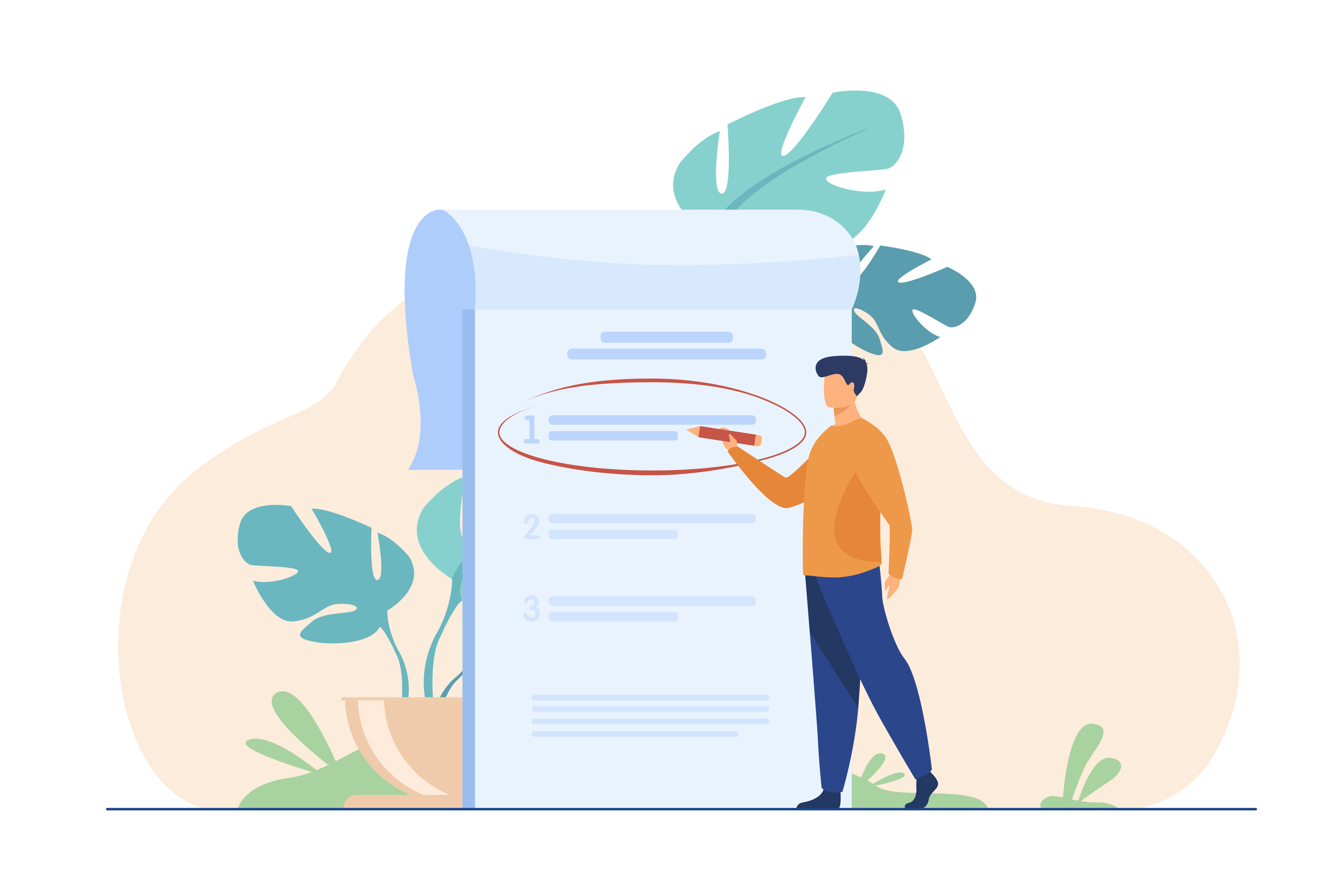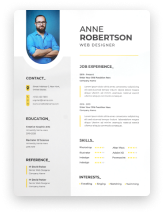In today's competitive job market, customizing your resume for each specific job application is not just an option, it's a necessity. The process of tailoring your resume goes beyond simply listing your experiences and skills; it involves strategically aligning your qualifications with the specific requirements of the job you're applying for. This guide is designed to take you through the intricate process of resume customization, ensuring that your resume not only catches the attention of recruiters but also resonates with the specific needs of the job. Whether you're a seasoned professional or a fresh graduate, this comprehensive guide will provide you with actionable insights and practical tips to make your resume stand out from the crowd. Prepare to dive into the art of resume tailoring, where every detail counts towards landing your dream job.

Analyzing the Job Description
Breaking Down the Job Description: What to Look For
When you start tailoring your resume, the first step is to meticulously analyze the job description. This is your blueprint for what the employer is seeking in a candidate. Look for specific skills, qualifications, and experiences that are emphasized. Pay attention to recurring themes or keywords, as these are likely crucial for the role.
Identifying Key Skills and Requirements
Once you've dissected the job description, make a list of the key skills and requirements mentioned. These are the attributes you need to highlight in your resume. If the job requires "excellent communication skills" or "proficiency in a specific software," these are phrases you should directly incorporate into your resume, assuming you possess these skills.
Understanding the Employer's Perspective
It's crucial to understand what the employer values most in a candidate. This may include specific technical skills, certain types of experience, or even particular personality traits. Getting into the mindset of the employer will help you emphasize the aspects of your background that are most relevant and appealing to them.
Structuring Your Resume
Choosing the Right Resume Format
Selecting the appropriate resume format is vital in showcasing your strengths. The three main types are chronological, functional, and combination. A chronological format is ideal if your work history aligns closely with the job you're applying for. A functional format focuses more on skills and is suitable for those with gaps in their employment or changing careers. The combination format, as the name suggests, blends both approaches.
Creating a Compelling Professional Summary
The professional summary at the top of your resume should be a powerful pitch, summarizing your most relevant experience, skills, and achievements. It's your first opportunity to align with the job description, so include key phrases from the job listing and focus on what you can offer to the employer.
Detailing Your Work Experience with Relevance
In your work experience section, go beyond listing your past job duties. Focus on achievements and responsibilities that align with the job description. Use quantifiable results where possible to demonstrate your effectiveness in previous roles.
Highlighting Educational Qualifications Appropriately
Your educational background should be presented to match the job requirements. If the job requires specific educational qualifications, make sure these are easy to find in your resume. Include any relevant courses or certifications that align with the job description.
Matching Your Skills and Experiences
Aligning Your Skills with Job Requirements
This section is about showcasing how your skills directly align with what the job description requires. If the job emphasizes leadership, detail any leadership roles or experiences you've had. Tailor the language you use to mirror the wording in the job description. This makes it easier for employers (and Applicant Tracking Systems) to see you're a good fit.
Emphasizing Relevant Work Experience
When detailing your work history, prioritize experiences that most closely match the job you're applying for. This might mean highlighting certain roles more than others or even omitting less relevant positions to keep the resume concise and focused.
Showcasing Transferable Skills
If you're changing careers or industries, emphasize transferable skills. These are abilities that can be valuable in a variety of jobs, like problem-solving, communication, and teamwork. Explain how these skills apply to the new role you're targeting.
Using the Right Keywords for ATS Optimization
Many companies use Applicant Tracking Systems (ATS) to screen resumes before a human ever sees them. These systems scan for keywords that match the job description. Include relevant keywords throughout your resume, especially in your skills and experiences sections, to increase the chances of passing through ATS filters.
Fine-Tuning and Customization
Adjusting Your Resume for Different Job Levels
Tailoring your resume also means adjusting it according to the level of the job you're applying for. For entry-level positions, focus more on educational achievements and any internships or volunteer work. For mid-level roles, highlight relevant job experiences and key accomplishments. For senior-level positions, emphasize leadership experiences, significant achievements, and strategic skills.
Incorporating Industry-Specific Terminology
Using industry-specific terminology demonstrates your familiarity with the field. This can be particularly important in technical fields like IT, healthcare, or engineering. Be sure to use terms and jargon that are commonly used in the industry, as long as they accurately describe your skills and experiences.
The Art of Effective Positioning and Emphasis
The way you position information on your resume can greatly impact its effectiveness. Place the most relevant and impressive information at the beginning of sections. Use formatting strategically to draw attention to key points, such as bolding job titles or using bullet points for achievements.
Additional Elements to Enhance Your Resume
Integrating Volunteer Work and Extracurricular Activities
Including volunteer experiences and extracurricular activities can significantly enrich your resume, especially if they are relevant to the job or demonstrate transferable skills. These activities can showcase your commitment, leadership skills, and ability to work in a team. Be specific about your role and achievements in these activities.
Adding Certifications and Awards
Certifications, licenses, and awards can set you apart from other candidates. Include any relevant certifications that enhance your qualifications for the job. Awards or recognitions, either academic or professional, also add value by highlighting your expertise and achievements in your field.
Incorporating Personal Projects or Portfolios
For certain roles, especially in creative fields like graphic design or content writing, adding a link to your portfolio or mentioning significant personal projects can be beneficial. This gives potential employers a tangible demonstration of your skills and creativity.
Proofreading and Finalizing
Ensuring Clarity and Consistency
The clarity and consistency of your resume are crucial. Ensure that your formatting is uniform throughout the document - this includes font sizes, bullet points, and heading styles. Consistency in how you present information, like job titles and dates, also contributes to a professional appearance.
Grammar and Spell-Check Essentials
Grammatical errors and typos can significantly undermine the professionalism of your resume. Use grammar and spell-check tools, but also manually review your resume. Sometimes, automated tools might miss context-specific errors.
Getting Feedback: The Importance of Second Opinions
Before finalizing your resume, get feedback from mentors, colleagues, or friends, especially those who are familiar with your industry. They can provide valuable insights on how your resume might be perceived and suggest improvements you might have overlooked.
Advanced Tips and Tricks
Leveraging Professional Networks in Your Resume
Mentioning your professional network can be a unique way to enhance your resume. If you've collaborated with industry leaders or renowned companies, briefly noting this in your experience section can add credibility. However, ensure that you respect confidentiality and professional boundaries.
Navigating Career Gaps and Career Changes
If you have career gaps or are changing careers, address these proactively in your resume. For gaps, a brief explanation in your cover letter or a skills-based resume format can be effective. For career changes, highlight transferable skills and why your unique background is an asset.
The Role of Social Media Profiles in Supporting Your Resume
In today's digital age, employers often review candidates' social media profiles. Ensure your LinkedIn profile is up-to-date and consistent with your resume. For creative fields, profiles on platforms like Behance or GitHub can also support your application.

Frequently Asked Questions (FAQs)
How often should I customize my resume for job applications?
Ideally, you should customize your resume for every job application. Each job has different requirements, and tailoring your resume to each ensures you're highlighting the most relevant skills and experiences.
Can a tailored resume compensate for a lack of experience?
A tailored resume can help highlight your strengths and potential, making up for less experience. Focus on transferable skills, relevant coursework, or volunteer experiences.
What are the common mistakes to avoid in resume customization?
Avoid overstuffing your resume with keywords, being dishonest about your skills or experiences, and neglecting the formatting and layout.
How to balance creativity and professionalism in a resume?
The key is understanding the industry norms. Creative fields may allow for more innovative resumes, while traditional fields might require a more conservative approach.
Should I include a cover letter with my customized resume?
Yes, a cover letter can provide context to your resume, allowing you to explain your qualifications and interest in the role in more depth.
Conclusion
Key Takeaways: The Power of a Tailored Resume
A well-tailored resume can significantly increase your chances of landing a job interview. By aligning your resume with the job description and showcasing your most relevant skills and experiences, you present yourself as the ideal candidate.
Encouraging Continuous Improvement and Learning
Always be open to learning and improving your resume-writing skills. The job market is constantly evolving, and keeping your resume up-to-date and aligned with current trends is crucial.
Recommended Reading









